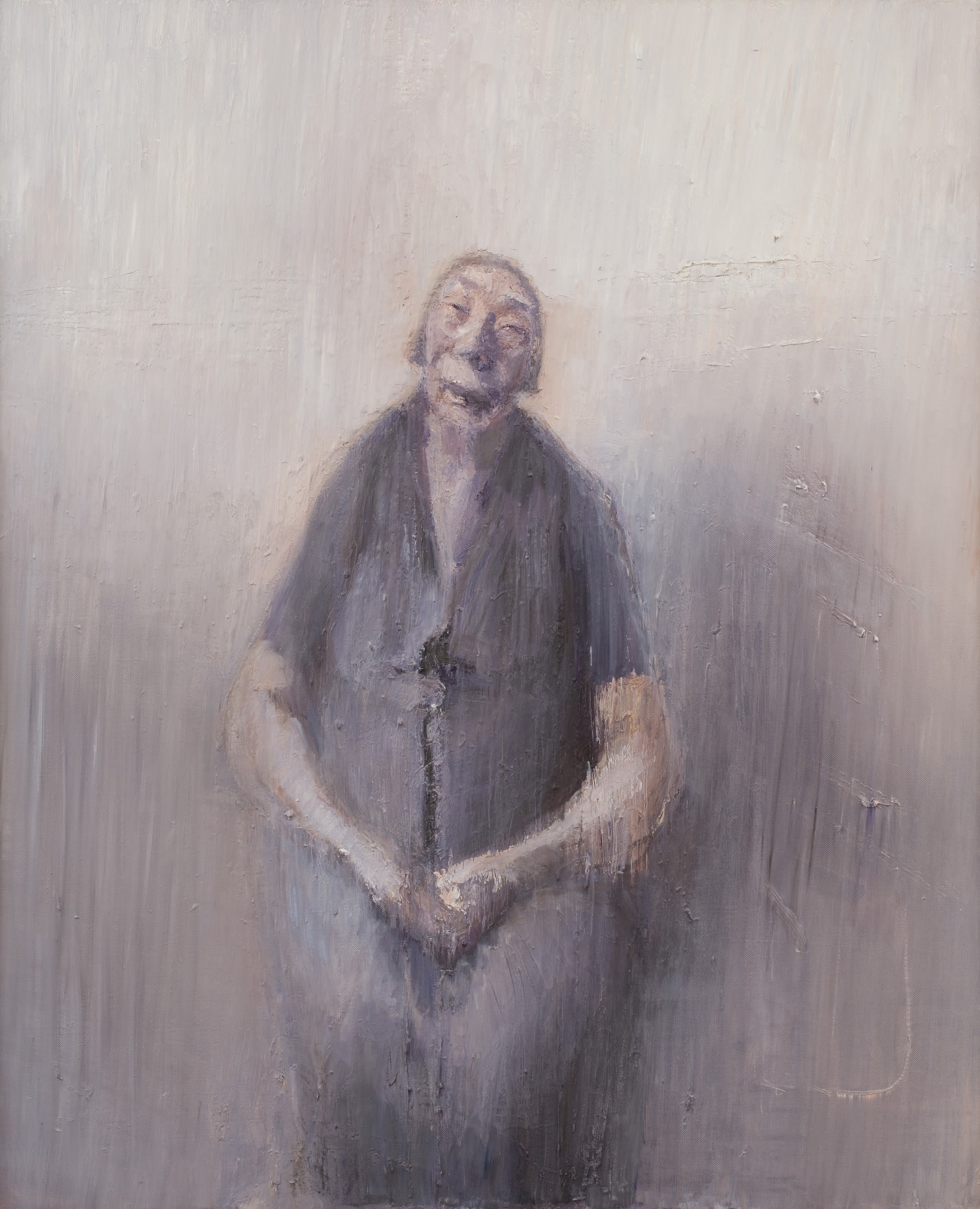Ahead of Piano Nobile’s Celebration of Portraiture exhibition, which coincides with the reopening of the National Portrait Gallery, InSight considers one of Celia Paul’s grand, intimate paintings of her mother.
InSight No. 126
Celia Paul, My Mother Facing, 1999

Pictures of ‘the artist’s mother’ emerged relatively late in the broad sweep of human civilisation. An early example is Albrecht Dürer’s devastatingly frank charcoal drawing of his aged mother, made in 1514, in which the forehead creases are detailed with assiduous naturalism. This has always been the advantage of depicting an intimate: they are implicitly tolerant of the artist and their art; there is no deference such as that entailed by a commission; and, unlike professional models, the artist shares a connection with them, such that the sitter’s appearance is itself meaningful and profound.

Celia Paul (b. 1959) started depicting her mother when she was an art student and continued to do so until shortly before her mother’s death in 2015. In her oeuvre, the image of her mother has the aspect of a talisman. It has been the defining subject of her work and invariably achieved a depth of pathos uncommon in painters of her generation. In 2011, referring to life classes at the Slade School of Fine Art where she studied, Paul explained the rationale for depicting her mother:
She [the model] meant nothing to me, so I couldn’t work from her. It seemed important to me to work from someone who mattered to me. And the person who mattered most to me was my mother.

My Mother Facing conveys a convincing sense of actual physical presence, a quality enabled by its impressive size. The painterly substance of the image registers clearly, at once constituting the body of the sitter and retaining its own material qualities of texture and colour. Smooth, evenly applied vertical brushstrokes structure the picture, richly coloured in a narrow chromatic range that keys with the skin tones and clothes of the mother’s figure. All details of the surroundings – even the chair in which the figure sits – are suppressed, indicated only slightly by small adjustments and additions in the paintwork. An area of shadow to the right of the seated figure provides a subtle but convincing spatial reference, indicating a sense of weight and volume.

Notwithstanding the figure’s reposed grandeur, the execution of the face and arms is fraught. Accretions of impasto in the face suggest an extended period of working and reworking. A depth of subtlety in expression and modelling has been achieved here: the eyes are almost closed and only see dimly, such that the woman seems caught in her own world; the eyebrows are raised and the mouth slumped, suggesting ease and peace. The bulk of this figure is so sensitively evoked that the mark making is indiscernible, with the contours softened and the surface of skin and fabric evinced without obvious patterning.
Considering the individuality of Paul’s work, it is appropriate that its sources were partly developed from personal encounters with her contemporaries. She had a relationship with the painter Lucian Freud between 1976 and 1988, about which she has written since his death in 2011. Comparisons have frequently been made between Paul’s early masterpiece, Family Group, and Freud’s Large Interior, W11 (After Watteau) (1981-83), for which Paul modelled. Her work has involved a maturation and development of Freud’s conception of the human figure in art, achieving a deepened sense of pathos in contrast to Freud’s work in which psychological tension is created by suppressing the higher faculties and supplying an access of animal warmth and inchoate vitality.
As with Lucian Freud’s work, Paul’s paintings are animated by the specific connections between the painter and the sitter. Unlike Freud’s work, Paul’s has an intimacy of emotion. In a memoir of 2019, Paul described the circumstances in which her mother sat for her:
She used the time of silence for prayer. […] She would travel down from Cambridge Tuesdays and Fridays to sit for me in my studio in London. She was always anxious about the journey and, very often, she didn’t sleep the night before. […] She would collapse into my battered wood-framed chair in my front room, with her bags scattered all around her.
After settling into a day’s sitting, ‘she entered into the silence with her soul’, Paul wrote: ‘Her faced assumed a rapt expression. My painting was raised to a higher level, too, because of her elevated state. The air was charged with prayer.’ The heightened atmosphere of these sittings is apparent from pictures such as My Mother Facing, which so feelingly reconstitute the sitter’s ambivalent mixture of old age discomfort and heightened spirituality.
Images:
1. Celia Paul, My Mother Facing, 1999, oil on canvas, 167.7 x 137.2 cm
2. Albrecht Dürer, Portrait of the Artist's Mother, 1514, Kupferstichkabinett, Berlin
3. Celia Paul, Self Portrait, May 2010, 2010, Ruth Borchard Collection © Celia Paul
4. My Mother Facing (detail)

